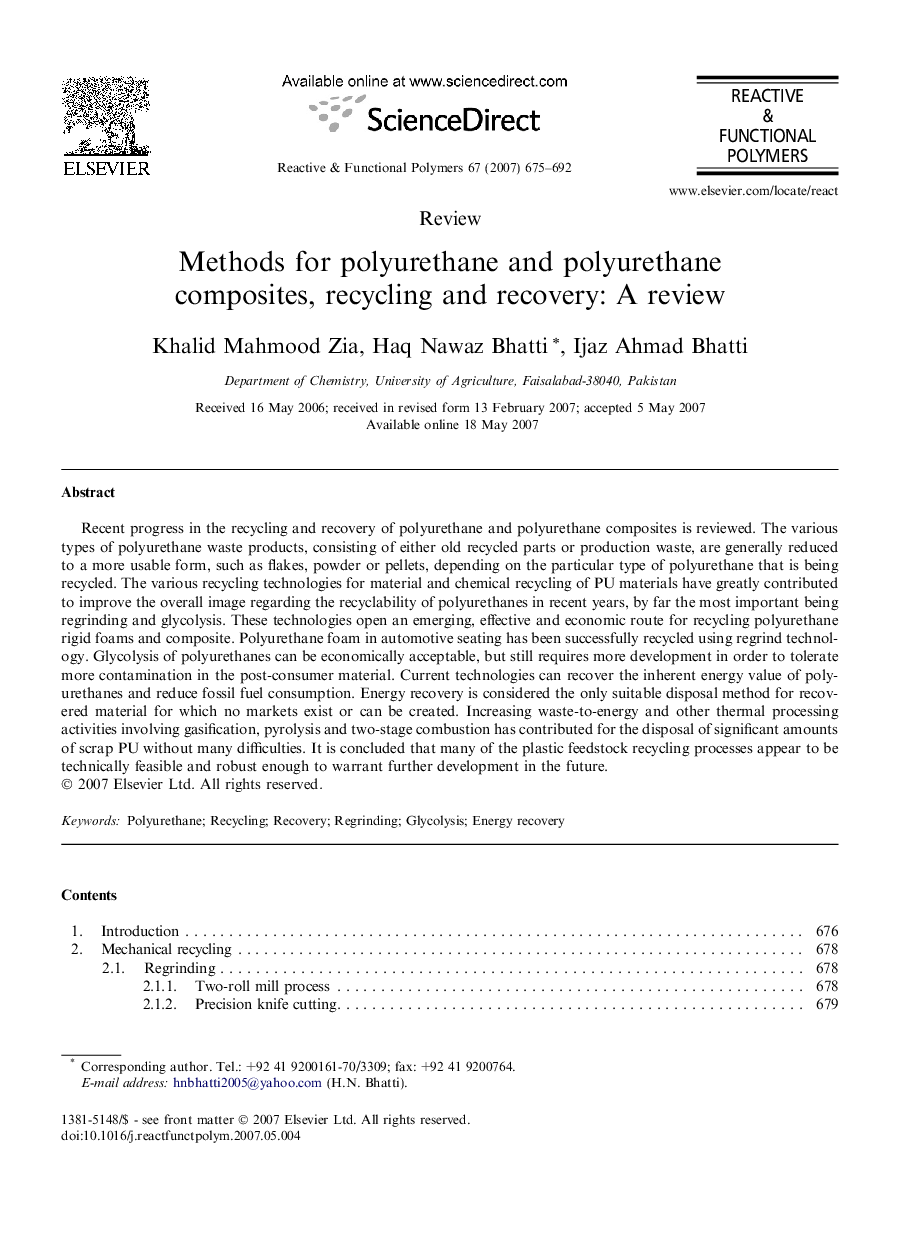| Article ID | Journal | Published Year | Pages | File Type |
|---|---|---|---|---|
| 5210922 | Reactive and Functional Polymers | 2007 | 18 Pages |
Abstract
Recent progress in the recycling and recovery of polyurethane and polyurethane composites is reviewed. The various types of polyurethane waste products, consisting of either old recycled parts or production waste, are generally reduced to a more usable form, such as flakes, powder or pellets, depending on the particular type of polyurethane that is being recycled. The various recycling technologies for material and chemical recycling of PU materials have greatly contributed to improve the overall image regarding the recyclability of polyurethanes in recent years, by far the most important being regrinding and glycolysis. These technologies open an emerging, effective and economic route for recycling polyurethane rigid foams and composite. Polyurethane foam in automotive seating has been successfully recycled using regrind technology. Glycolysis of polyurethanes can be economically acceptable, but still requires more development in order to tolerate more contamination in the post-consumer material. Current technologies can recover the inherent energy value of polyurethanes and reduce fossil fuel consumption. Energy recovery is considered the only suitable disposal method for recovered material for which no markets exist or can be created. Increasing waste-to-energy and other thermal processing activities involving gasification, pyrolysis and two-stage combustion has contributed for the disposal of significant amounts of scrap PU without many difficulties. It is concluded that many of the plastic feedstock recycling processes appear to be technically feasible and robust enough to warrant further development in the future.
Related Topics
Physical Sciences and Engineering
Chemistry
Organic Chemistry
Authors
Khalid Mahmood Zia, Haq Nawaz Bhatti, Ijaz Ahmad Bhatti,
